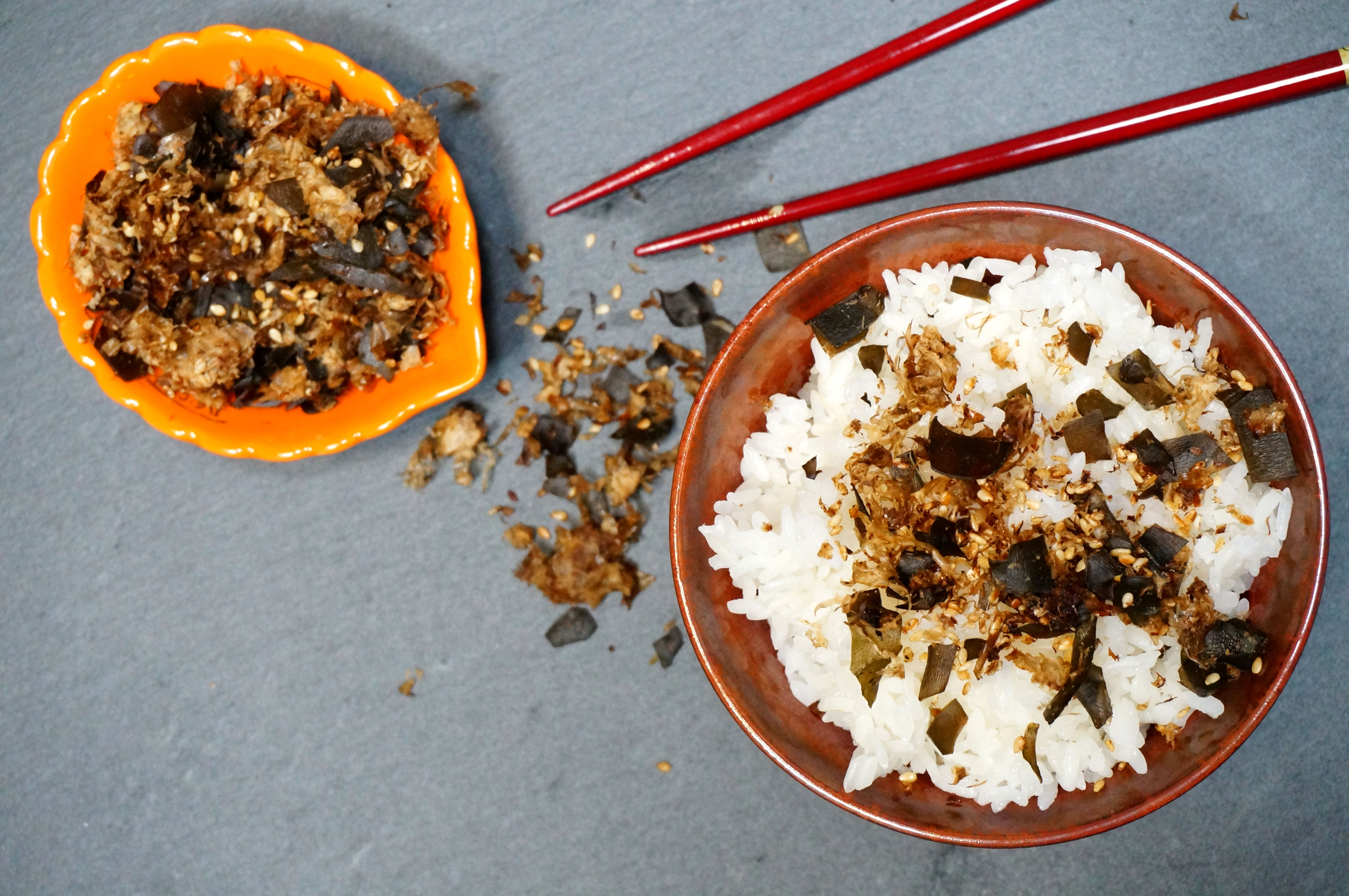Are you one of those people that aren’t a big fan of plain old rice? Well, here’s a little secret: you’re not alone! Believe it or not, not all Japanese people like plain rice. In fact, there are a wide variety of rice toppings out there to give that rice a little extra flavor! And these toppings aren’t limited to rice alone – sprinkle them on top of noodles, eggs, soup, popcorn, and of course onigiri, anything you’re looking to give a little flavor boost to, you’ll be amazed at how delicious it can be!
Called furikake, rice seasoning is a great item to keep on hand for dressing up your favorite dishes. But as amazing as it is, furikake was a well kept secret from westerners, which I am determined to change! I hope that soon you’ll be like me and always have a bottle in the pantry, ready to use whenever the craving hits!!  But, being an imported item, of course it’s a little pricey, and in my attempt to make my addiction a little more affordable, I like to make my own.
But, being an imported item, of course it’s a little pricey, and in my attempt to make my addiction a little more affordable, I like to make my own.
Out of all the flavor combinations out there, I love furikake with seaweed and sesame the best. I suppose the taste is so characteristic of Japanese cuisine, it’s like Japan in a bottle. I wanted to share this recipe first, both because the taste and the ingredients are so very Japanese. But if seaweed isn’t your thing, there are more variations to come, so stay tuned!
This recipe uses the leftovers from making homemade dashi, which is a great way to stretch your groceries a little further. It has different taste than furikake from a bottle, but it’s still delicious, I promise!
Recipe – Leftover Dashi Furikake:
– Take your leftover kombu and bonito and chop it up into small flakes.

– Heat a skillet over medium heat. Once warm, add sesame seeds and toast until brown and fragrant, stirring occasionally to keep from burning.

– Add the bonito and kombu and cook for about 5 minutes until most of the moisture is evaporated.

– Turn the heat down a little, then add the soy sauce and sugar. Careful, the sugar and soy sauce can burn, so be sure to start stirring it in immediately!!

– Keep stirring until the soy sauce and sugar have been completely mixed in, then continue cooking until all moisture is evaporated.

– Let cool, then enjoy on top of a fresh bowl of hot rice!


Discuss and Share